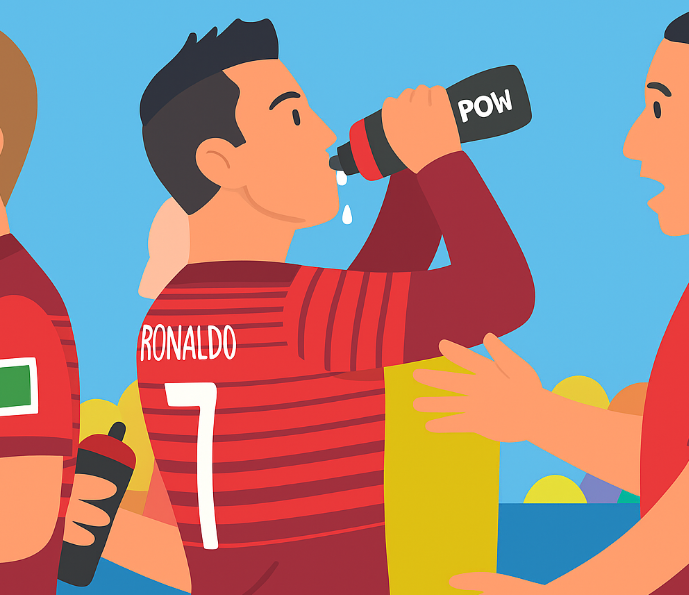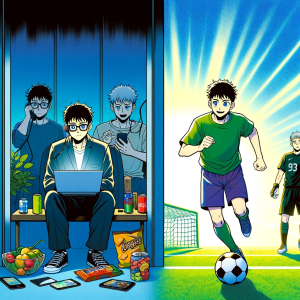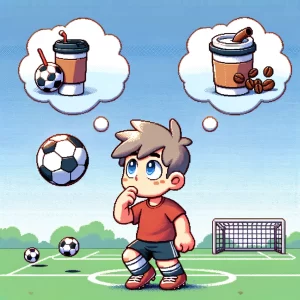
Beating the Heat: What the 2026 World Cup Teaches Us About Soccer and Extreme Weather
If you’ve been watching any of Club World Cup or the Gold Cup, you may have noticed hydration break–actual stops in the play to allow players to drink some water. So, heat’s a major concern thinking ahead to the World Cup next summer. Imagine lining up for kickoff, sweat already pouring, in a stadium where it feels hotter than 120°F. That’s not a dystopian drill, it’s the likely reality for many teams at the 2026 FIFA World Cup.
A new study offers a scientific wake-up call: extreme heat, dehydration, and low oxygen levels could redefine performance—and safety—for elite soccer players. But the lessons aren’t just for pros. Whether you coach a U12 rec team or manage a college program, the findings could reshape how you prepare athletes for summer games.
The Science Behind the Sweat: What the Study Found
Researchers analyzed hourly weather and physiological stress data for all 16 World Cup venues across the U.S., Mexico, and Canada. They calculated the Universal Thermal Climate Index (UTCI)—a measure of how hot it feels based on air temp, humidity, wind, and more—then adjusted it to reflect real soccer conditions like sprinting and sweating in semi-open stadiums.
Key findings include:
- 10 out of 16 stadiums posed a “very high” risk of extreme heat stress.
- Afternoon matches in Arlington, Houston, and Monterrey could see “uncompensable” heat—meaning players may no longer be able to cool themselves through sweating.
- Sweat loss could exceed 1.5 kg/hour, putting players at risk of dehydration that directly affects focus, speed, and decision-making.
- High-altitude venues like Tlalpan and Guadalajara will challenge endurance with lower oxygen levels, impairing aerobic performance.
Why This Matters Beyond the World Cup
Extreme weather isn’t just a global tournament problem—it’s a growing challenge for every level of the game. Youth tournaments held on hot summer turf, weekend league matches under the blazing sun, and even training camps in dry or humid climates can put players at risk.
This study makes it clear: heat isn’t just uncomfortable—it changes how the game is played. And if you’re not planning for it, your team could suffer physically and strategically.
Heat Hits Performance Hard—Here’s How
Here’s how high heat and humidity affect soccer players, according to the research:
- Reduced sprint distance and high-speed efforts
- Impaired concentration and reaction time
- Increased risk of cramps, heat exhaustion, or even heat stroke
- Psychomotor fatigue, meaning players are less accurate, slower to react, and more prone to mistakes
If you’re a coach or trainer, these aren’t just physiological facts—they’re tactical red flags. A heat-fatigued center back misjudging a long ball or a midfielder losing tracking responsibility due to brain fog can change the game.
Game Plan: How to Train Smarter in the Heat
Luckily, science offers practical ways to prepare players for heat stress:
🧊 Hydrate Like a Pro
- Preload with fluids before games (aim for a euhydrated state).
- Tailor hydration breaks during training and matches.
- Weigh players pre- and post-session to estimate sweat loss.
🌡️ Adjust Training Loads
- Avoid the heat peak (2–5 p.m.) when planning high-intensity work.
- Use small-sided games with rest intervals to reduce thermal strain.
- Include “heat acclimation” days leading up to big tournaments.
🧠 Monitor Mental Fatigue
- Add concentration drills late in training when fatigue sets in.
- Educate players on signs of heat illness: dizziness, confusion, nausea.
🏟️ Plan with Purpose
- Schedule morning or evening matches when possible.
- Bring portable cooling methods: ice towels, shade tents, and cold drinks.
- Recognize that high-altitude venues might need separate acclimation plans.
Bigger Picture: Club and League Policy Implications
This isn’t just an issue for coaches and trainers. Club directors and league administrators should also take note:
- Reassess match times and tournament formats in hot regions.
- Update heat policy protocols with modern metrics like UTCI, not just WBGT.
- Invest in player wellness tools, from hydration tracking apps to heat-readiness assessments.
If elite federations like FIFA are considering rescheduling games or installing venue-specific cooling zones, your club can (and should!) take proactive steps too.
Your Turn to Kick It Off
Let’s bring this conversation to the sidelines. Ask yourself and your team:
- 🧃 How are you currently monitoring and managing hydration in hot conditions?
- 🏋️ Have you adjusted training or match strategies based on climate or altitude?
- 📅 What changes could you make now to better protect your players in peak summer months?
Join the conversation on social or in the comments below. Let’s make every match safe, smart, and high-performing—no matter the temperature.



